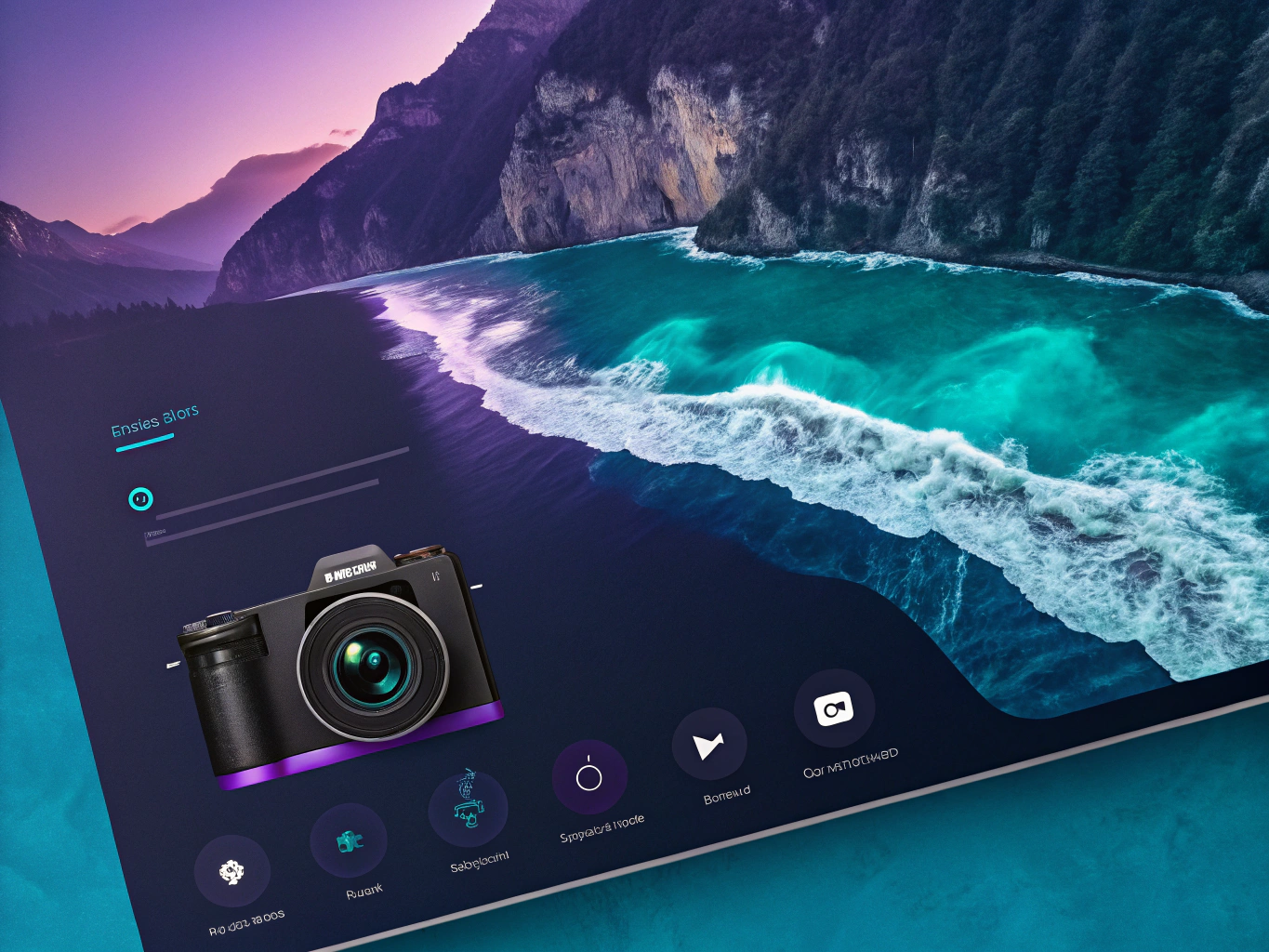Ever notice how we talk about product features like they’re these magical things that’ll solve all our problems? “This app has 47 filters!” “Our platform uses advanced AI!” But here’s the thing – most users couldn’t care less about your feature list. What they care about is whether your product makes their life better, easier, or more interesting.

I’ve spent years building products, and if there’s one thing I’ve learned, it’s that features are like ingredients in a recipe. Having the finest truffle oil doesn’t matter if you’re making a peanut butter sandwich. Yet so many brands get caught up in the feature arms race, trying to outdo competitors by cramming in more and more capabilities.
What Are Product Features (Really)?
Let’s cut through the noise. A product feature isn’t just a bullet point on your spec sheet – it’s a distinct capability or characteristic that delivers specific value to your user. Think of features as the building blocks that come together to create the overall product experience.
But here’s where it gets interesting: features exist on a spectrum. Some are purely functional (like being able to crop a photo), while others are experiential (like applying an AI-powered filter that makes your selfie look like a Renaissance painting). The magic happens when these features work together seamlessly to solve real problems.
The Feature Paradox: More Isn’t Always Better
You know what’s funny? The most successful photo editing apps often have fewer features than their competitors. Take VSCO – it became a cultural phenomenon not because it had the most filters or the fanciest tools, but because it made photo editing feel creative and intuitive. They understood something crucial: features should reduce friction, not create it.
The Strategic Role of Product Features

Features aren’t just technical specifications – they’re strategic assets. When I’m working with brands through ProductScope AI, I always ask them: “What job is this feature hired to do?” It’s a question that completely changes how they think about feature development.
Core vs. Nice-to-Have Features
Every product has what I call its “non-negotiables” – the core features without which the product simply wouldn’t work. For a photo editing app, these might include basic adjustments like brightness, contrast, and cropping. These are your foundation.
Then there are your differentiating features – the ones that make users choose you over competitors. Maybe it’s your AI-powered background removal that works better than anyone else’s. Or perhaps it’s your unique set of filters that create a specific aesthetic your target audience loves.
The Evolution of Photo Editing Features
Remember when photo editing meant spending hours in Photoshop? Now we’ve got apps like Snapseed and Lightroom mobile that pack professional-grade editing capabilities into our phones. The best free photo editing software today often rivals what premium desktop apps offered just a few years ago.
The rise of AI has completely transformed what’s possible. Want to add a person to your photo? There are now AI image mixer tools that can do this in seconds. Need to make a photo look more professional? AI-powered filters can analyze and enhance your images automatically.
Feature Implementation: The Make-or-Break Moment
Here’s something most product guides won’t tell you: how you implement a feature is often more important than the feature itself. I’ve seen countless products fail not because their features were bad, but because the implementation was clunky or unintuitive.
The User Experience Factor
Take Canva, for example. Can Canva edit photos? Absolutely. But what makes it special isn’t just its editing capabilities – it’s how those features are presented. The interface is so intuitive that complete beginners can create professional-looking designs in minutes.
This is where the art of feature design comes in. Every feature needs to be discoverable (users need to know it exists), accessible (they need to be able to find and use it easily), and valuable (it needs to solve a real problem or fulfill a genuine desire).
Testing and Iteration
Let me share a secret from my own product development experience: no feature is ever perfect at launch. The key is to get something viable out there and then iterate based on real user feedback. Some of the best features in products today started as basic implementations that evolved based on how users actually used them.
When we built our first AI photo filter at ProductScope, it was… well, let’s say it had room for improvement. But by watching how users interacted with it and collecting their feedback, we were able to refine it into something that actually delivered value.
The Evolution of Product Features in Digital Tools
Let’s get real about product features for a second. We’ve all been there – downloading that shiny new app, excited about its promised capabilities, only to find ourselves lost in a labyrinth of buttons and toggles that make absolutely no sense. It’s like being handed a Swiss Army knife where every blade is actually a spoon.
The thing is, features aren’t just checkboxes on a product manager’s wishlist. They’re the building blocks that transform a basic tool into something that actually solves problems. And in today’s landscape, particularly with photo editing apps, we’re seeing this play out in fascinating ways.
The AI Revolution in Photo Editing Features
Remember when photo editing meant spending hours manually removing backgrounds or touching up imperfections? Now we’ve got AI that can do that in seconds. Tools like Canva and Photoshop Express aren’t just offering filters anymore – they’re packaging sophisticated AI capabilities in ways that feel almost magical.
But here’s where it gets interesting: the best free photo editing software isn’t necessarily the one with the most features. It’s the one that understands its users’ workflows. Take Snapseed, for instance. It’s not trying to be the best Photoshop alternative – it’s focused on making professional-grade editing accessible to anyone with a smartphone.
The Anatomy of Essential Product Features

When we break down what makes a feature truly essential, we need to look at three key elements:
- Problem-solving capacity: Does it address a real user need?
- Implementation quality: Is it reliable and intuitive?
- Integration: Does it play nice with other features?
Core vs. Nice-to-Have Features
In the world of photo editing apps, core features are pretty straightforward – crop, resize, basic filters. But then you’ve got your AI filters free of charge in some apps, which would’ve been considered premium features just a year ago. The lines between essential and optional are blurring, and it’s fascinating to watch.
Want to add person to photo online free? Five years ago, that would’ve required serious Photoshop skills. Now it’s a basic feature in numerous apps, thanks to AI image mixer technology. The democratization of these capabilities is changing how we think about feature hierarchies.
Feature Strategy for Modern Products
Here’s something most product managers won’t tell you: adding features is easy. Removing them? That’s where things get dicey. Every feature you add is like adopting a pet – it needs ongoing care, maintenance, and attention.
The Mobile-First Feature Paradigm
When we look at the best iPhone photo editor options or photo editor for iPhone capabilities, we’re seeing a fundamental shift in how features are conceptualized. It’s not about shrinking desktop features to fit on a smaller screen – it’s about reimagining what features should be in a mobile-first world.
Take something as simple as a photo frame app. The best ones aren’t just offering decorative borders – they’re integrating with social media, offering AI-powered suggestions, and providing seamless cloud sync. The feature isn’t just the frame; it’s the entire experience around it.
The Future of Feature Development
We’re entering an era where the question isn’t “What features can we add?” but rather “What problems can we solve?” And sometimes, solving problems means removing features that create cognitive overhead. It’s about finding that sweet spot between capability and simplicity.
Look at filters for pictures – what started as simple color overlays has evolved into sophisticated AI-powered transformations. But the best apps don’t just throw every possible filter at users; they curate and contextualize these features in ways that make sense for different use cases.
Measuring Feature Success
Here’s a truth bomb: usage metrics lie. Just because users are clicking on a feature doesn’t mean it’s providing value. We need to look deeper at engagement patterns, user feedback, and most importantly, the outcomes users achieve.
When we talk about how to update image processing capabilities or introduce new editing tools, the metrics that matter aren’t just about adoption rates. They’re about completion rates, time-to-value, and whether users come back to use these features again.
The ROI of Feature Development
Building features isn’t cheap. Every new capability adds complexity to your codebase, increases testing requirements, and demands ongoing maintenance. That’s why successful products aren’t just adding features willy-nilly – they’re thinking strategically about the return on investment.
And sometimes, the best investment isn’t in building new features at all. It’s in making existing features work better together, creating smoother workflows, and reducing friction points in the user journey.
The Evolution of Product Features in Photo Editing

Let’s be real—product features aren’t just checkboxes on a spec sheet. They’re the building blocks that determine whether users fall in love with your product or abandon it faster than a New Year’s resolution. And nowhere is this more evident than in the wild world of photo editing apps.
Remember when Instagram’s filters were revolutionary? Now we’ve got AI that can swap your face with a Renaissance painting or turn your pet into a Pokemon. The evolution of photo editing features reads like a sci-fi novel that somehow became reality.
The AI Revolution in Photo Editing Features
Here’s where things get interesting. AI isn’t just another feature—it’s fundamentally changing how we think about product features altogether. Traditional photo editing apps required users to understand concepts like layers, masks, and curves. But AI-powered features? They’re like having a professional photographer’s brain embedded in your app.
Take background removal. What used to require careful selection and masking can now be done with a single tap. The best free photo editing software today often includes AI capabilities that would’ve cost hundreds of dollars just a few years ago. It’s democratizing professional-grade editing in ways we couldn’t have imagined.
The Future of Feature Development
We’re standing at a fascinating crossroads. The best iPhone photo editor of today might be completely reimagined tomorrow. AI filter free options are becoming increasingly sophisticated, and tools to add person to photo online free are getting scary good. But here’s the thing—it’s not about replacing human creativity. It’s about augmenting it.
Think about it like this: AI image mixer tools aren’t just combining pixels; they’re blending creative possibilities. The question isn’t “What is the best photo editing app for free?” anymore. It’s “How can these tools help me express my creative vision?”
Managing Feature Complexity in Modern Products
Can Canva edit photos? Sure. But the more interesting question is how they’ve managed to make complex editing features accessible without overwhelming users. It’s a masterclass in feature management—something every product developer should study.
The trick isn’t just adding features; it’s about orchestrating them in a way that feels natural. How do I edit a photo to look professional? The answer shouldn’t require a PhD in digital imaging. The best products make sophisticated features feel intuitive.
The Balance of Power and Simplicity
Which is the no. 1 photo edit in the world? What is the No. 1 editing app? These questions miss the point. The real magic happens when products find that sweet spot between power and accessibility. It’s not about having the most features—it’s about having the right features, implemented in the right way.
Look at filters for pictures. The best implementations don’t just slap on a preset; they understand context. They consider lighting, subject matter, and intended mood. They use AI to suggest edits that make sense for your specific image.
The Future of Product Features
We’re moving toward a future where features aren’t just tools—they’re collaborators. AI isn’t replacing human creativity; it’s amplifying it. The ability to update image content intelligently, to understand context, and to adapt to user preferences isn’t just convenient—it’s transformative.
But here’s the kicker: the most successful products won’t be the ones with the most AI features. They’ll be the ones that use AI to make their features more human-centered, more intuitive, and more empowering.
Final Thoughts on Feature Evolution
As we wrap this up, remember that product features aren’t just about functionality—they’re about possibility. They’re about giving users the power to create, to express, to achieve their goals. Whether you’re building the next great photo editor or any other product, the principles remain the same: understand your users, embrace innovation thoughtfully, and always keep the human element at the center.
The future of product features is bright, complex, and incredibly exciting. But amidst all the AI hype and technical possibilities, let’s not forget what matters most: creating tools that genuinely help people achieve their goals, express their creativity, and maybe—just maybe—have a little fun along the way.
Because at the end of the day, the best features aren’t the ones that show off our technical prowess. They’re the ones that fade into the background, becoming so natural that users forget they’re using them at all. And isn’t that the real magic of great product design? For further understanding of product features.
👉👉 Create Photos, Videos & Optimized Content in minutes 👈👈
Related Articles:
- Amazon Product Description Guidelines & Best Practices
- The Ultimate Guide to Using Product Photography Props
- Product Photography: Tips for Taking Base Photos before AI
Frequently Asked Questions
What is the best photo editing app for free?
One of the best free photo editing apps available is GIMP (GNU Image Manipulation Program). It offers a wide range of features similar to those found in professional software like Photoshop, including layers, filters, and advanced retouching capabilities. GIMP is open-source and supported by a large community, which means regular updates and a plethora of tutorials are available.
Can Canva edit photos?
Yes, Canva can edit photos and is widely used for its user-friendly interface and versatile design features. It allows users to adjust brightness, contrast, and saturation, apply filters, and add text or graphics to images. Canva is particularly popular for creating social media graphics, presentations, and marketing materials.
How do I edit a photo to look professional?
To edit a photo to look professional, start by adjusting basic settings like exposure, contrast, and white balance to enhance clarity and color accuracy. Use tools such as cropping to improve composition, and apply subtle filters to unify the image’s tone. Advanced techniques such as dodge and burn can add depth, while retouching tools can eliminate blemishes and distractions.
Which is the no. 1 photo edit in the world?
The most popular photo edit in the world tends to be adjusting brightness and contrast, as these fundamental changes can dramatically improve an image’s quality. By enhancing these elements, photos can gain a more dynamic range and clarity, making them more visually appealing.
What is the No. 1 editing app?
Adobe Photoshop is often considered the No. 1 editing app due to its comprehensive set of features and professional-grade tools used by photographers and designers worldwide. Known for its capabilities in detailed photo manipulation, creative design, and powerful editing options, Photoshop remains a top choice for both beginners and professionals.
About the Author
Vijay Jacob is the founder and chief contributing writer for ProductScope AI focused on storytelling in AI and tech. You can follow him on X and LinkedIn, and ProductScope AI on X and on LinkedIn.
We’re also building a powerful AI Studio for Brands & Creators to sell smarter and faster with AI. With PS Studio you can generate AI Images, AI Videos, Blog Post Generator and Automate repeat writing with AI Agents that can produce content in your voice and tone all in one place. If you sell on Amazon you can even optimize your Amazon Product Listings or get unique customer insights with PS Optimize.
🎁 Limited time Bonus: I put together an exclusive welcome gift called the “Formula,” which includes all of my free checklists (from SEO to Image Design to content creation at scale), including the top AI agents, and ways to scale your brand & content strategy today. Sign up free to get 200 PS Studio credits on us, and as a bonus, you will receive the “formula” via email as a thank you for your time.
